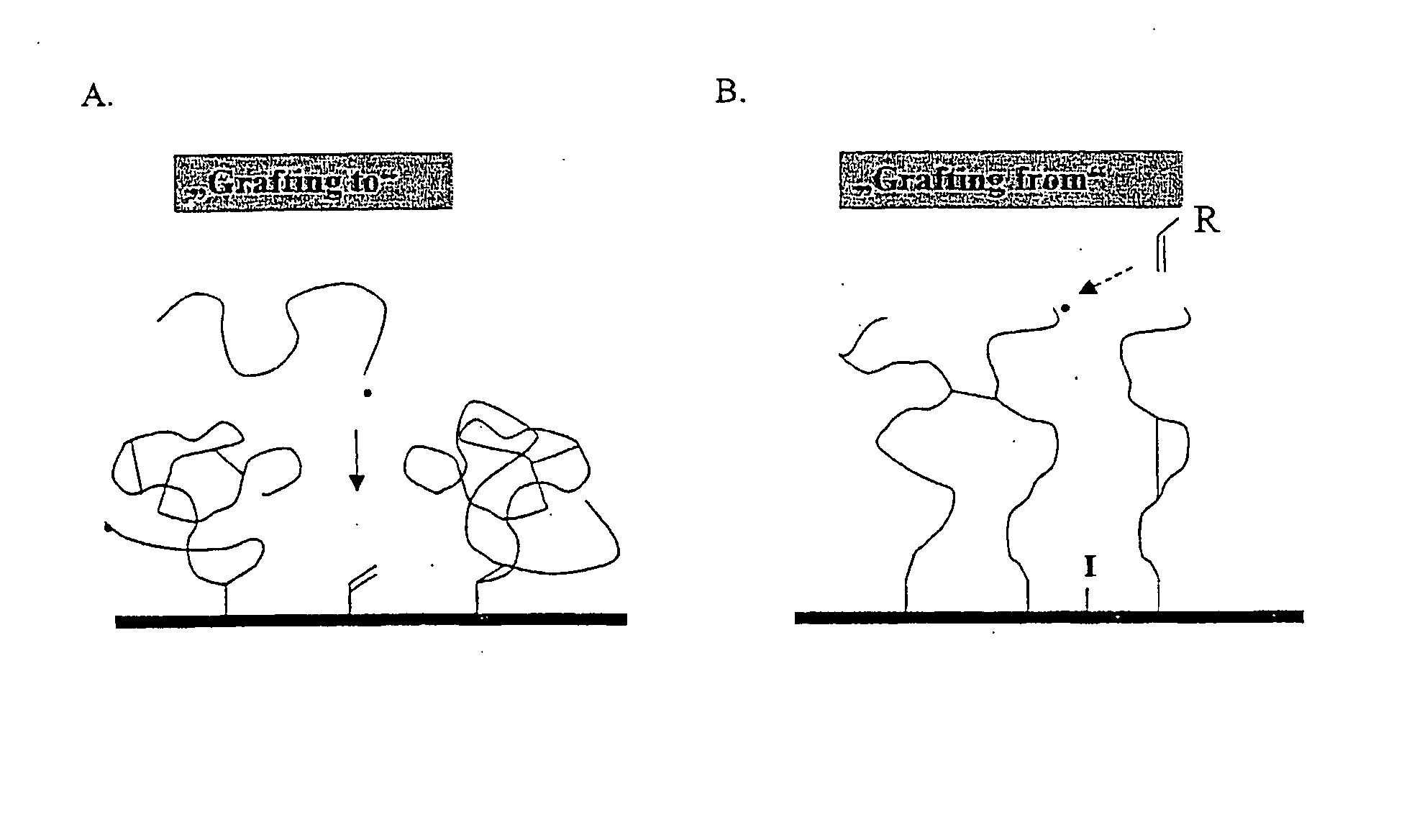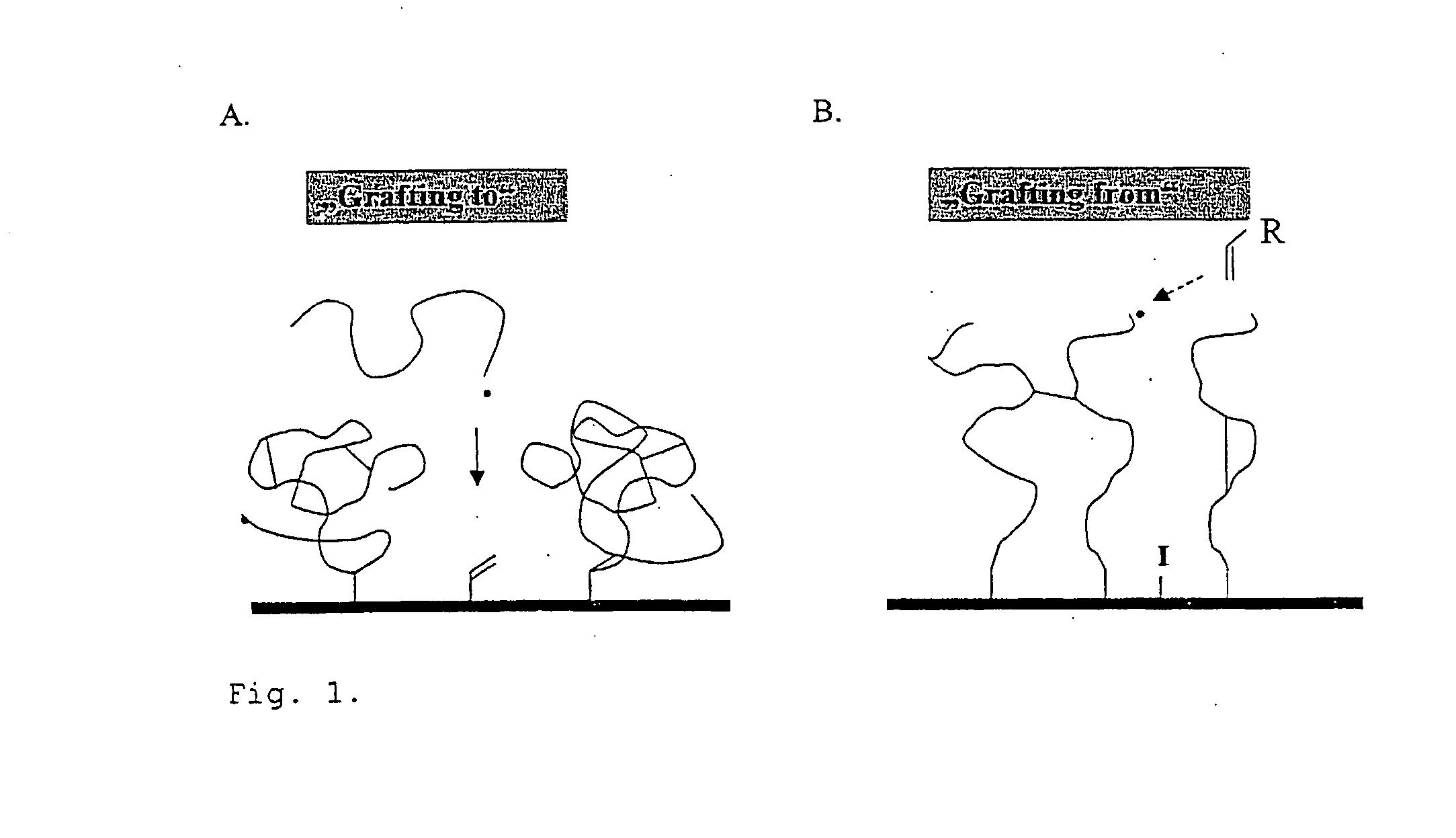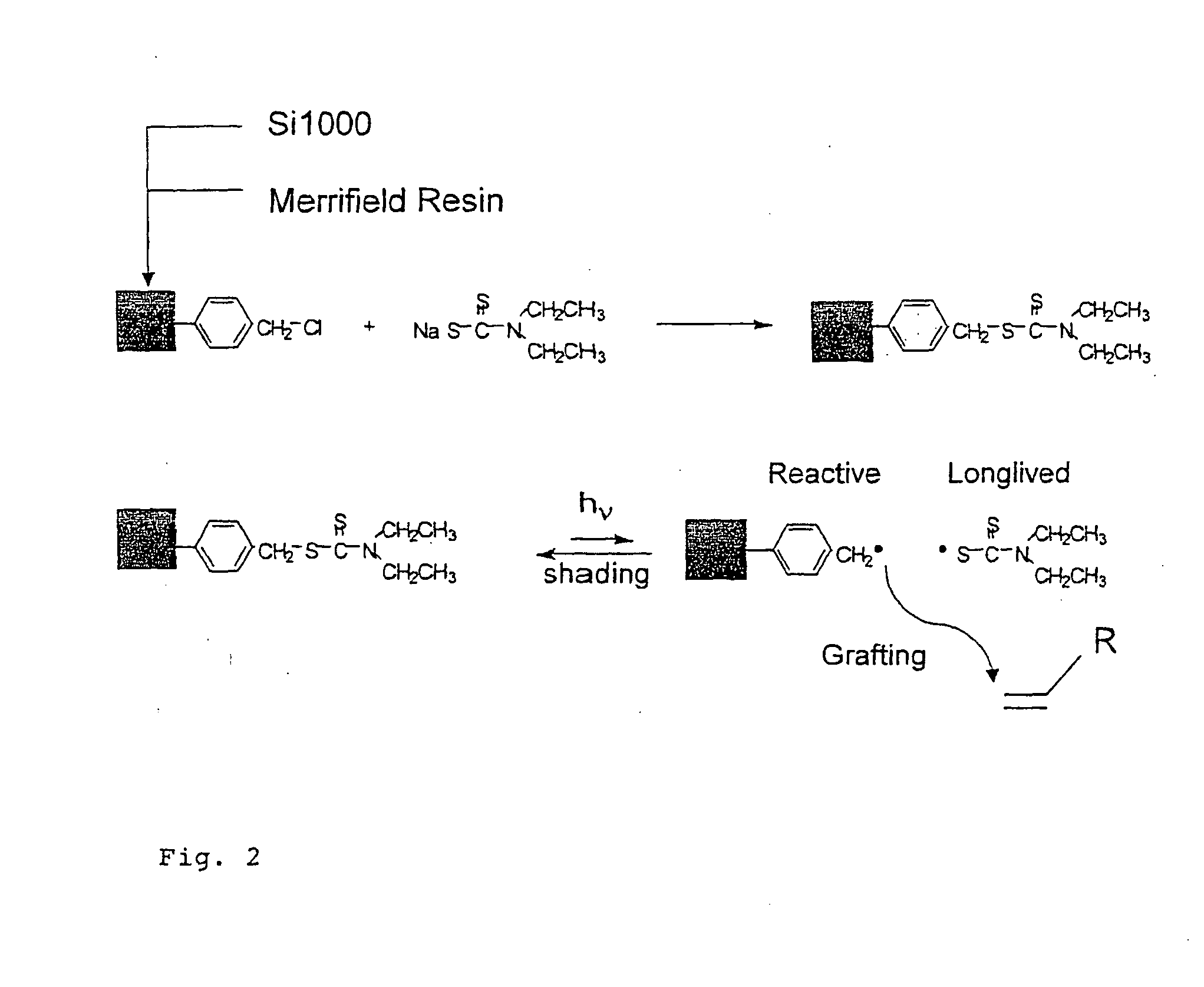Polymer Films
a technology of polymer films and films, applied in the field of polymers, can solve the problems of difficult control of the thickness of the layer, high density of the grafted chain, etc., and achieve the effect of high yield of useful particles
- Summary
- Abstract
- Description
- Claims
- Application Information
AI Technical Summary
Benefits of technology
Problems solved by technology
Method used
Image
Examples
example 1
Imprinted (MIP) and Nonimprinted (MP) Polymer-Silica Composites Using Immobilized Azo-Type Initiators and RAFT Polymerization.
[0049] Porous Si100 particles (average pore diameter (d)=10 nm) were modified with azoinitiator in two steps,12 before grafting of a polymer film on its surface. Prior to the first modification step, the silica surface was rexydroxylated according to standard procedures. This is known and result in a maximum density of free silanol groups of ca. 8 μmol / m2. A maximum of half the silanol groups reacted with (3-aminopropyl)triethoxysilane (APS) in the first silanization steps. The subsequent step was the attachment of azobis(cyanopentanoic acid) ACPA. On the basis of the increase in nitrogen content, a maximum area density of 1.5 μmol / m2 for the azo-initiator.
[0050] 1 g of this azo-modified silica particles was suspended in a polymerization mixture containing L-phenylalanine anilide (L-PA) (0.240 g), RAFT agent (2-phenylprop-2-yl-dithiobenzoate) (0.2 g), MAA ...
example 2
Imprinted (MIP) and Nonimprinted Polymer-Silica Composites Using Iniferter-Type Initiators
[0051] Prior to the first modification step, the silica surface was rexydroxylated according to standard procedures. This is known to result in a maximum density of free silanol groups of ca. 8 μmol / m2. A maximum of half the silanol groups reacted with p-(chloromethyl)phenyltrimethoxy silane in the first silanization steps. The subsequent step was the conversion of the benzylchloride groups to the corresponding diethyldithiocarbamate by reaction with sodium-N,N-diethyldithiocarbamate. On the basis of the increase in nitrogen and sulphur content, a maximum area densities of 0.75 μmol / m2 for the iniferter was calculated.
[0052] 1 g of iniferter-modified silica particles was suspended in a polymerization mixture containing L-PA (0.240 g), MAA (0.68 mL) and EDMA (7.6 mL) dissolved in 11.2 mL of dry toluene. The polymerization was carried out as described in example 1.
[0053] Non-imprinted control...
example 3
[0054] Imprinted (MIP) and Nonimprinted Hydrophilic Polymer-Silica Composites Using Iniferter-Type Initiators
[0055] 1 g of iniferter-modified silica particles, obtained as described in Example 2, was suspended in a polymerization mixture consisting of L-PA (0.04 g), MAA (0.172 mL), HEMA (0.49 mL) and EDMA (1.26 mL) dissolved in 3 mL of dry 1,1,1-trichloroethane. The polymerization was carried out as described in example 1.
[0056] Non-imprinted control polymer composites (NIP) were prepared as described above but without addition of the template.
PUM
| Property | Measurement | Unit |
|---|---|---|
| Hydrophilicity | aaaaa | aaaaa |
Abstract
Description
Claims
Application Information
 Login to View More
Login to View More - R&D
- Intellectual Property
- Life Sciences
- Materials
- Tech Scout
- Unparalleled Data Quality
- Higher Quality Content
- 60% Fewer Hallucinations
Browse by: Latest US Patents, China's latest patents, Technical Efficacy Thesaurus, Application Domain, Technology Topic, Popular Technical Reports.
© 2025 PatSnap. All rights reserved.Legal|Privacy policy|Modern Slavery Act Transparency Statement|Sitemap|About US| Contact US: help@patsnap.com



